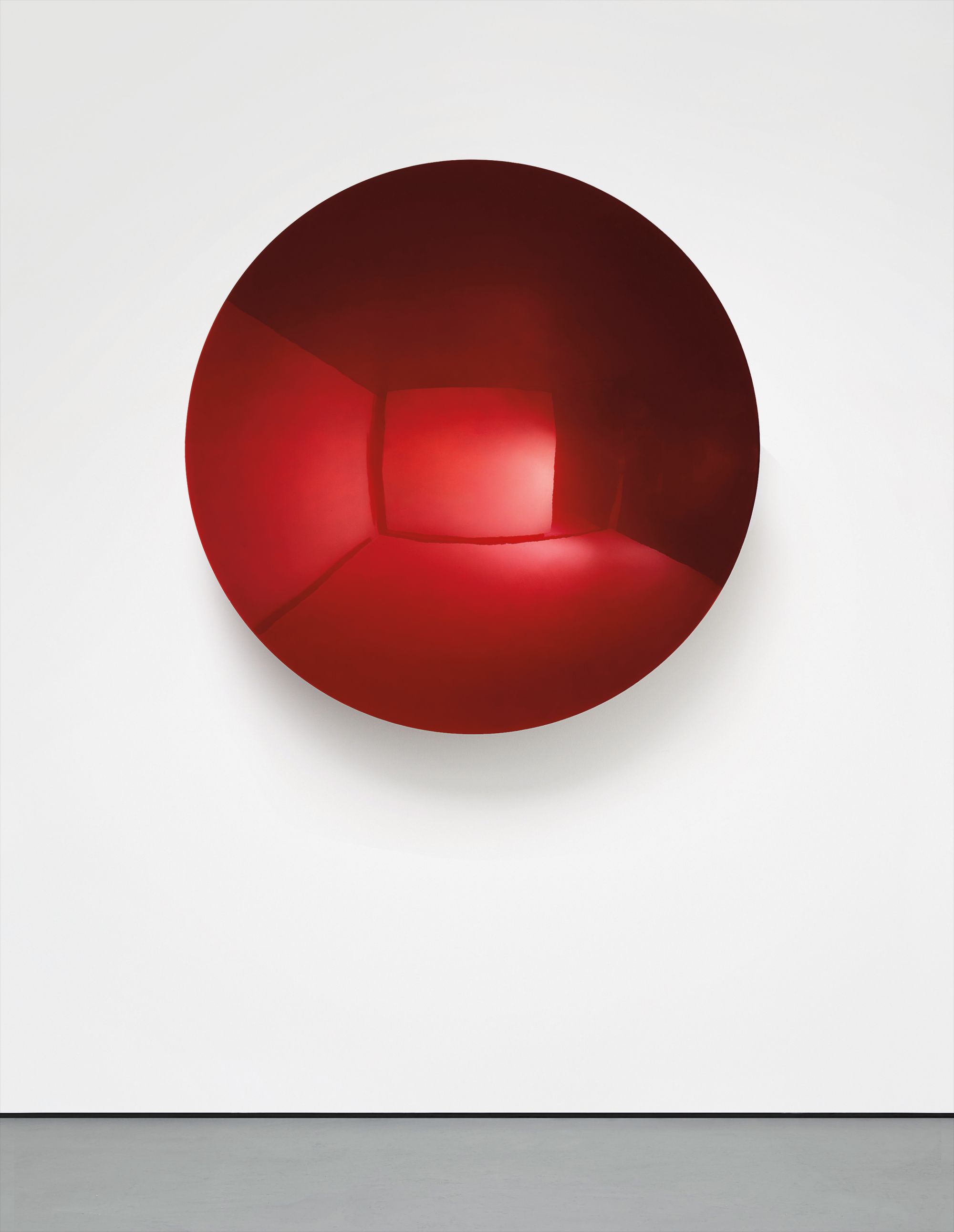

15
Anish Kapoor
Untitled
stainless steel, lacquer
120 x 120 x 27.5 cm (47 1/4 x 47 1/4 x 10 7/8 in.)
Full-Cataloguing
One of the most skilled and renowned sculptors of our time, Anish Kapoor has created works that seem to—and often do—retreat into the horizon, melt into the floor and disappear into the wall, destabilising our every notion of physical and spatial reality. His works are both present and absent, solid and ethereal, infinite and illusive, true and false. His geometric and naturalistic designs, for which he first came to recognition in the 1980s, are composed of a variety of materials from stainless and Cor-ten steel to aluminium, wax, resin, fibreglass, and stones such as marble. His masterful use of a diverse range of media reflects Kapoor’s versatility and his dexterity with both the natural and the fabricated.
In the mid-1990s, Kapoor began to engage more heavily with the concept of the void or concavity, emphasizing the taut dichotomy of positive and negative space. It is since this moment of artistic revelation that Kapoor’s sculptures particularly seem to recede into the distance and distort the space around them. Speaking on the subject, the artist suggested that ‘the void is not silent. I have always thought of it more and more as a transitional space, an in between space. It’s very much to do with time. It’s a space of becoming something that dwells in the presence of the work that allows it, or forces it, not to be what it states in the first instance’ (A. Kapoor in Anish Kapoor, London Hayward Gallery, 1998 pp. 35-36). Kapoor’s sculptures warp our perception of space, time and self. Yet the void is only one element of the experience of viewing a work such as Untitled, 2000.
In the present lot, Kapoor clearly embraces the oblivion of the void, but equally, and seemingly paradoxically, the wholeness of surface reflections. These two duelling points—that of nothingness and that of everythingness—are contained just below the work’s surface. Brushed and finished to a high polish in an enticing, deep cherry red, Untitled is first and foremost, reflective. Upon approaching the sculpture, the viewer is confronted not only with their own image, but with the image of the entire world that inhabits the space around them. Enclosed in this dense concave disc is the entirety of the environment in which it exists. Yet the depth below the surface is undeniable. The concavity leaves the surface behind, sucking the viewer down a galvanised rabbit hole of the infinite.
Depth, concavity and reflectiveness impress upon the work, but so too does its bold colour. The disc’s bright, deep red surface physically alters the space that it consumes. Kapoor acknowledges that ‘colour is a real transformer. It changes things very directly... Recently I have tended to work more with space, with conditioning the space in such a way as to bring about different states of being.’ (G. Celant, Anish Kapoor, Milan 1998, p. XXXI). The red surface allows the work to subvert the space in which it is contained, interpreting its surroundings within its own interior. This ruby lens allows the viewer to revaluate and re-engage with the place in which the sculpture sits as well as their own self; at the same time, the alluring and metallically seductive red hue seems to slip out into its environs.
But it is the tension between the pull of depth and the reflective powers of the surface that sustains the work’s magnetism to the viewer. Kapoor explains, ‘The interesting thing about a polished surface to me is that when it is really perfect enough something happens—it literally ceases to be physical; it levitates; it does something else... what happens with concave surfaces is, in my view, completely beguiling. They cease to be physical and it is that ceasing to be physical that I'm after’ (A. Kapoor, quoted in Anish Kapoor, exh. cat., Institute of Contemporary Art, Boston, 2008, p. 53). This, in essence is what happens in a focused viewing of Untitled: the work becomes more than the sum of its parts.
Like a panoply of quicksilver that is ever-changing, the present lot is a seductive and sophisticated play with light and form. Kapoor uses the potential of sculpture to engage with our bodies and senses. His use of red is particularly elegant, as it holds both personal and universal connotations. As well as being a colour he associates with his own Indian heritage, the artist illuminates the greater significance: ‘red, of course, is the colour of the interior of our bodies. In a way it's inside out’.
Untitled, 2000, evokes more than just the experience of surface and depth in its viewer. Indeed, as viewers gravitate towards this mesmeric piece, they experience both the physical and the ethereal. The work is a study in interiors while beckoning outwards. It pulls the spectator in and pushes him away. Concerned with the visible and the invisible, the infinite and the apparent, Untitled, 2000, is equal parts joyful materiality as it is conceptual puzzle.